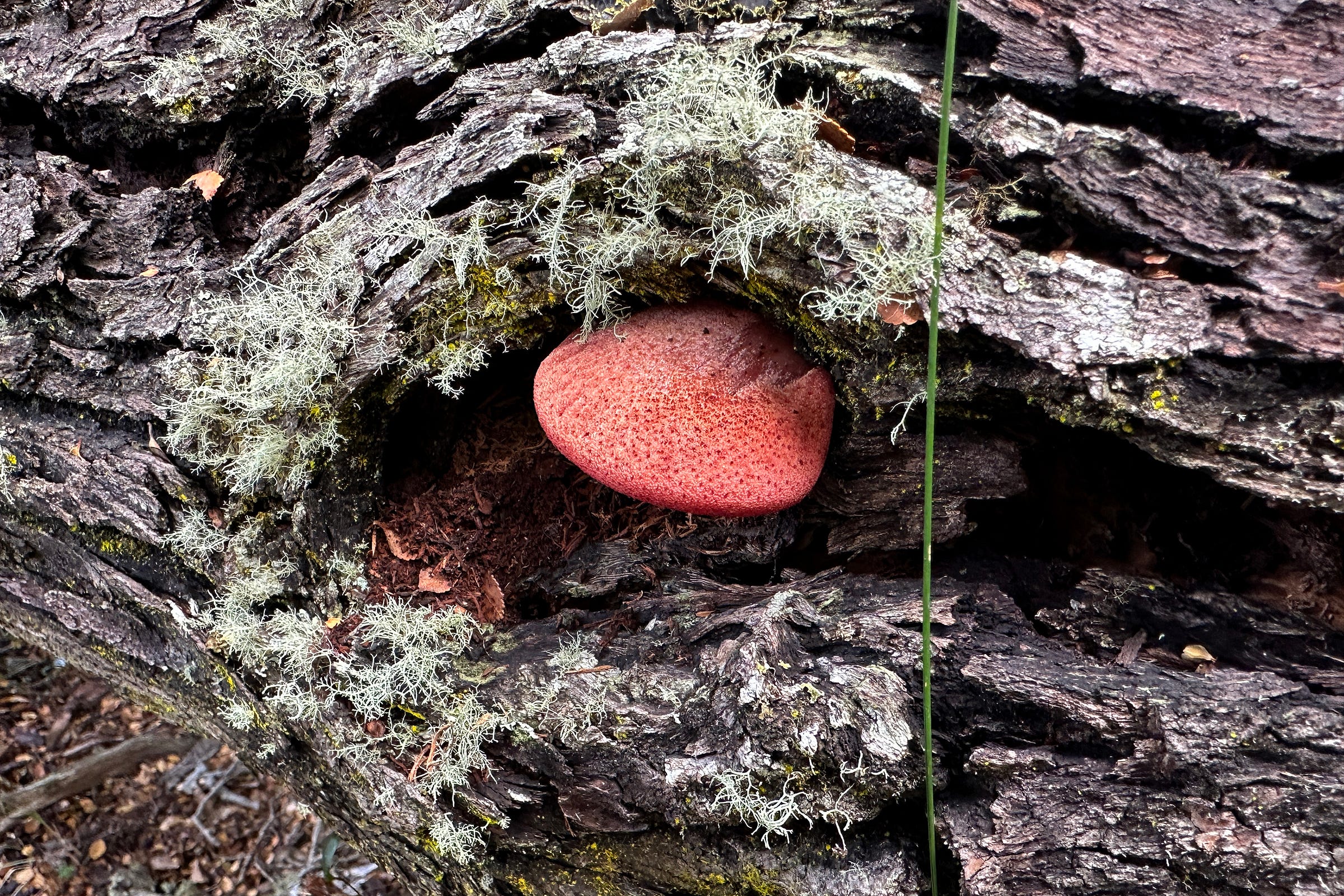Lengua de Vaca Mushrooms, Canelo & Marine Life in Tierra del Fuego, Patagonia
Foraged, fished and hunted ingredients from southernmost Argentina.
At Kalma, Jorge Monopoli’s restaurant in Ushuaia, the southernmost city in Argentina, I tasted a mushroom that I couldn’t quite believe was actually a mushroom. It’s not the first time it has happened, as fungi have a habit of playing mind tricks on humans. This mushroom, locally called lengua de vaca, or cow’s tongue, was sliced lengthwise, somewhat resembling cuts of fish that were served a few courses before. If I wasn’t told it was a mushroom already, I would have assumed it was a piece of fat. There was a slight crispness on skin, but the finest layer only. Plus, a touch of salt. It was perfect and I’m in love.
There wasn’t a lot done to the mushroom to get it to this point. “Just laminated and passed over the grill for a minute or two, smoked with small quantities of lenga chips for a short time during service,” says Tomás Egusquiza Bidauri, Kalma’s chef de cuisine. They served it with two broths. One made with roasted turnip with some roasted radishes inside, and the other a green tea-like infusion of ñire (Nothofagus antarctica).
The mushroom was Fistulina antarctica, a type of beefsteak mushroom. Beefsteak polypores are a relatively rare species of fungi, even for avid foragers. You can find the more widespread Fistulina hepatica in many parts of the world, including Europe and North America. They tend to have tough interiors and are named because they look like a slab of raw meat. They often are eaten raw and have slightly sour taste.
The following day I went with Bidauri, Mariana Marquez and Dolores Caspe from Kalma to Bahía Túnel on a clear Patagonia summer day beside the Beagle Channel. There, amidst the sub-Antarctic forests of southern beech trees (Nothofagus), we found loads of them, some of which were quite large, maybe a kilo or two. They had a soft, almost spongy outer layer and the flavor raw was a touch bitter, like a radish.
The forest, not to mention the coastline, was brimming with other mushrooms and countless edible plants, such as berries and seaweeds. Here’s a look at what I encountered in a few days in wild, wondrous Tierra del Fuego:
Keep reading with a 7-day free trial
Subscribe to New Worlder to keep reading this post and get 7 days of free access to the full post archives.




